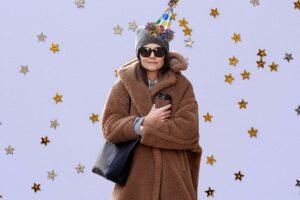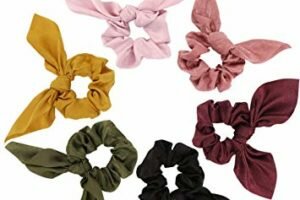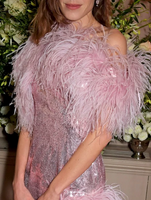At the point when you stroll into the show space at SCAD FASH Museum of Fashion + Film at this moment, you’re met with an amazing praise to the history of fashion. Mannequins are wearing everything from the court outfits of Queen Elizabeth they to the crinoline tutus of the Ballets Russes, and the general impression is one of practically powerful excellence.
From over the room, you can see silk pooling at the feet of certain figures, while light looks off the beaded bodices of others. In any case, in the event that you get inside about a foot of the mannequins, you may see that it isn’t silk in any way—and those aren’t dabs, either.
All things considered, it’s paper.
The all-paper outfits in the “Fashioning Art From Paper” show were made by Belgian artist Isabelle de Borchgrave, who chose at age 14 that she might particularly want to desert customary school and study drawing. Her folks concurred, and de Borchgrave went through the following three years drawing bare models at the Royal Academy of Fine Arts of Brussels. Despite the fact that she reveals to Mental Floss that the redundancy no uncertainty showed her how to draw, the remainder of her arts instruction was surrendered for the most part over to her.
So she visited museums, allowing the art inform and move her very own work, and she before long built up an enthusiasm for style that she’s been developing from that point onward. To de Borchgrave, her absence of formal preparing in style is an innovative resource.
“I never studied fashion—that means I stay really free,” she reveals to Mental Floss. She started making lively hand-painted dresses and different outfits, which she’d either sell or wear herself.
At that point, in 1994, a game changing visit to the Metropolitan Museum of Art started a thought that would modify the course of her profession. Subsequent to seeing a review for French style originator Yves Saint Laurent, de Borchgrave—who, by then, had been drawing on paper and painting on textures for quite a long time—started to think about how she’d reproduce certain plans utilizing just paper and paint.
“I was so touched by the beauty, by the elegance, by the fabrics, and I wanted to have everything for me,” she says. It appeared the ideal method to stay in the domain of design, while freeing herself from the requests of purchasers. What’s more, in principle, her paper recreations of articles of clothing truly are only for her.
“When I finish a dress, I put it in a room. I don’t show it to anybody,” she says. “But I feel better, because I have done something I can be proud of.”
Throughout the most recent couple of decades, be that as it may, word has gotten out about the phenomenal paper outfits, and they’ve currently been shown in museums everywhere throughout the world. At the SCAD FASH show, the troupes are separated into classes that each mirror an alternate time and motivation, spreading over around 500 years of design history.
A few outfits from de Borchgrave’s first figure arrangement, “Papiers à la Mode,” are remembered for the display. To make “à la Mode,” she worked together with theater ensemble planner Rita Brown to decide how best to control paper, paint, and paste to mirror textures and examples from the late sixteenth century as far as possible up through the 1920s. In spite of the fact that the more fragile textures may require strength paper—for some ribbon trimmings and veils, for instance, she arranges a flimsy, gauzy paper from England—she essentially works with an economical paper normally utilized for enveloping chocolate by Belgium.
Reproducing unsettled collars, gold weaving, and many-sided plans with paper and paint appears to be troublesome enough regardless of whether you could examine the first pieces of clothing with an amplifying glass and your very own two hands—yet de Borchgrave doesn’t regularly have that extravagance. While a portion of her figures in “Papiers à la Mode” are designed according to real apparel at The Metropolitan Museum of Art’s Costume Institute and other outfit assortments around the globe, many depend on works of art alone.
Sovereign Elizabeth they court dress, for instance, confined with ribbon and finished with different blossoms and creatures, was propelled by Nicholas Hilliard’s picture of the sovereign from 1599.
Furthermore, subsequent to seeing François Boucher’s 1756 painting of Madame de Pompadour, special lady of King Louis XV and something of a French design symbol herself, de Borchgrave developed her own rendition of the brilliant lace and rose-decorated outfit.
As delineated above, de Borchgrave’s pieces of clothing aren’t constantly correct multiplications of the firsts, and they’re not intended to be; rather, she expects to encapsulate each style, giving herself the opportunity to change examples or include embellishments any place she sees fit.
Having said that, it’s about difficult to meander the show without being awestruck by how intently she’s figured out how to repeat a portion of the outfits. This is particularly valid for the “Splendor of the Medici” arrangement, which celebrates the rich luxury worn all through the Renaissance by Florence’s (and later Tuscany’s) most well known ruling family.
At some point somewhere in the range of 1593 and 1595, Marie de’ Medici, little girl of Francesco they de’ Medici, modeled for a picture by Pietro Facchetti while wearing an outfit with rich gold example down the front and a superb trim neckline. On the off chance that you didn’t have a clue about any better while seeing de Borchgrave’s rendering, you may believe that dress—directly down to the “pearl” embellishments—had endure these most recent four centuries.
And afterward there’s “Les Ballets Russes,” a whimsical, energetic arrangement that reconsiders the offbeat outfits worn by the Ballets Russes, an expressive dance company built up in 1909 that highlighted probably the most popular artists and choreographers ever, including Anna Pavlova, Vaslav Nijinsky, and George Balanchine. Much like how de Borchgrave’s pieces of clothing aren’t made by a profession style fashioner, the ensembles and sets of the Ballets Russes weren’t planned by genuine outfit and set originators. Rather, organizer Serge Diaghilev appointed artists like Henri Matisse and Pablo Picasso to think of them.
Working off photographs and the artists’s representations, de Borchgrave gives the striking, varied execution clothing another life in the spotlight. What’s more, here, specifically, you can see the indication of all her initial days spent drawing human models. In spite of the fact that these mannequins are made uniquely of wire, de Borchgrave has set the ensembles on them so that the figures really appear as though they’re dancing.
Regardless of whether you can’t envision yourself went to your office enveloped by yards of tulle and fabric, there are likely components from de Borchgrave’s work that you do find in stores nowadays, from brilliant botanical examples to enormous, forward looking bows. All things considered, as de Borchgrave says herself, styles just come constantly back.
The SCAD FASH Museum of Fashion + Film, situated on Savannah College of Art and Design’s Atlanta grounds, is displaying “
John Williams is an english poet, playwriter. He has written many poems and short stories. He completed MBA in finance. He has worked for a reputed bank as a manager.Williams has found his passion to write and express, that is why he has decided to become an author. Now he is working on Curious Desk website as a freelance news writer.





Add Comment